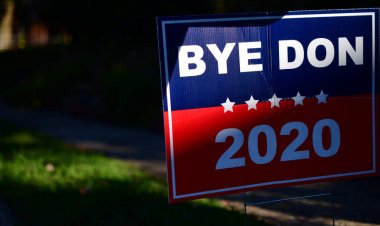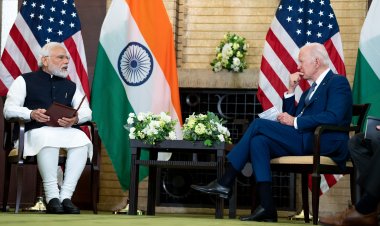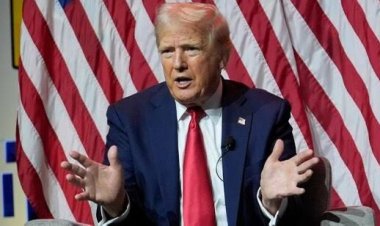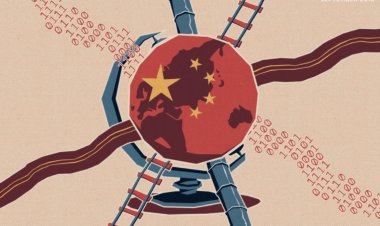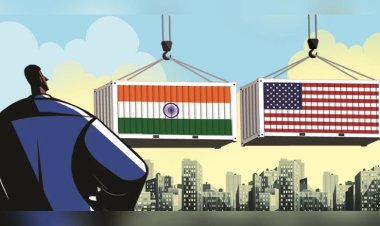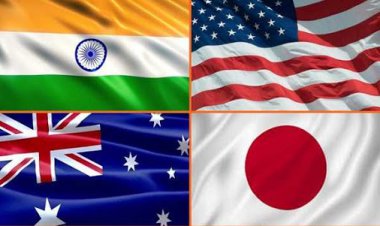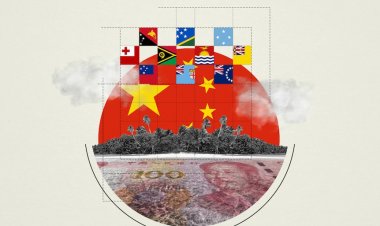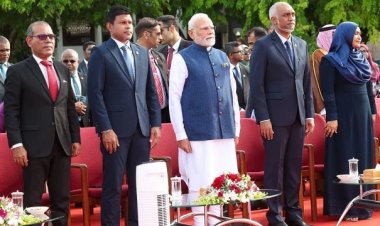China-US Rivalry in the Soft Power Domain: Implications for India
The current rivalry between the United States and China reflects historical patterns, resembling the Cold War dynamics between the U.S. and the Soviet Union where beyond military and economic posturing, the real battleground lies in the realm of ideas. This article explores the softer side of this great power rivalry: the war for hearts and minds. While China and the United States use various soft power tactics, their final goal is the same: to maximise influence.
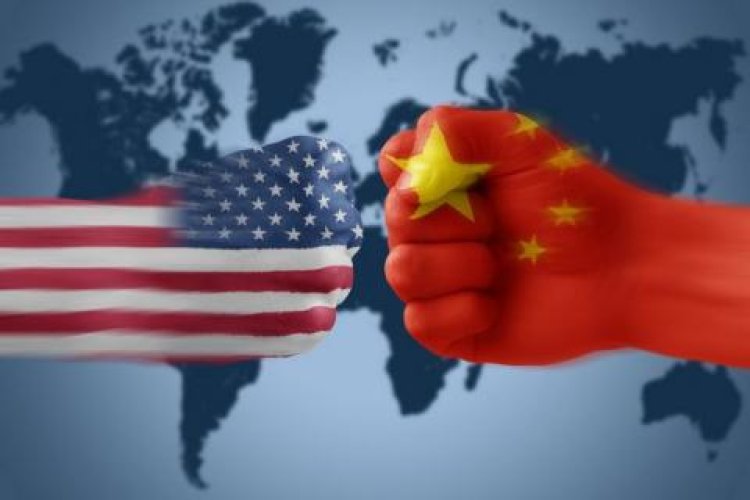
Analysis
By Anoushka Banerjee
In the grand theatre of international relations, a familiar script is playing out—the rise of a new power challenging the existing order. The current rivalry between the United States and China reflects historical patterns, resembling the Cold War dynamics between the U.S. and the Soviet Union where beyond military and economic posturing, the real battleground lies in the realm of ideas.
Graham T. Allison's concept of the 'Thucydides' Trap' captures this phenomenon, where an emerging power poses a threat to the established order, often leading to conflict. The rivalry between the United States and China, popularly being referred to as the Cold War 2.0 is a great example in this context. Despite their profound differences, both countries have global ambitions, laying the groundwork for a possible collision. History has demonstrated that such clashes frequently result in conflict, albeit the nuclear era adds a new element of complexity.
This article explores the softer side of this great power rivalry: the war for hearts and minds. While China and the United States use various soft power tactics, their final goal is the same: to maximise influence. The United States tries to preserve its hegemony, while China, on the rise, aspires to the summit. In simpler terms, this article aims to answer the question – What does the new cold war mean for India? By exploring Chinese soft power, drawing comparisons with the U.S., and offering insights on India's strategic moves, we navigate the complexities of this geopolitical drama. As India stands at the crossroads, the article will shed light on potential avenues for India to navigate this terrain and assert its own position in the evolving global order.
What we are talking about is a change of the soft power landscape whereby China is becoming a major force in reshaping global influence. Soft power, as developed by Joseph Nye, used to be associated with the United States’s cultural dominance; however, its concept is changing. It simply means that China and other Asian countries are defining soft power in terms of culture as well as other economic strategies like investment and financial aid. The strategic elements of China's soft power approach present a complex scenario. While Joseph Nye's original framework was largely based on the analysis of American culture during the Cold War, China's approach extends beyond cultural influence. The Belt and Road Initiative (BRI) is a notable example, showcasing China's economic clout and global ambitions. The challenge lies in understanding how this multifaceted approach impacts regions, particularly Southeast Asia. In Southeast Asia, where nations are experiencing the complexities of emerging democracies and fragile civil societies, the patterns of Chinese exports and policies like the debt-trap strategy pose potential threats. China's evolving soft power strategy includes political instruments and aid, with a shift from past practices tied to large-scale infrastructure projects. The concern is that these strategies may have far-reaching consequences on the socio-political dynamics of the region.
Moreover, as China strategically focuses on countries with strained bilateral ties with the United States, diplomatic tensions rise. This is evident in examples like Cambodia, where China strengthens ties as relations with the U.S. deteriorate. The challenge is twofold: understanding the potential impact of China's soft power strategies on the ground in regions like Southeast Asia and navigating the geopolitical complexities arising from China's diplomatic manoeuvrers.
The global image of China is also intricately woven into its soft power strategies. From sending politicians on study tours to promoting foreign aid, China's skilled public diplomacy mirrors tactics employed by the United States. However, China's approach is broader, including economic power, which introduces both opportunities and challenges on the global stage. In conclusion, the problem encompasses deciphering the implications of China's evolving soft power strategies, especially in regions like Southeast Asia. The delicate balance between economic influence, diplomatic manoeuvring, and potential impacts on emerging democracies and fragile civil societies presents a multifaceted challenge for international relations. Navigating these complexities requires careful analysis and strategic responses to ensure stability and cooperation in the face of a rising global player.
In the complex tapestry of international relations, China's ascent to global influence is characterized by a nuanced approach to soft power, extending well beyond conventional cultural means. Several key factors contribute to China's soft power surge, notably its status as an economic powerhouse propelled by robust growth and strategic investments, exemplified by the ambitious Belt and Road Initiative (BRI). Additionally, China's diplomatic maneuvering, especially with nations experiencing strained relations with the United States, plays a pivotal role in establishing itself as a diplomatic counterweight. Active participation in large-scale infrastructure projects, often dubbed "white elephant" constructions, not only enhances China's global visibility but also solidifies its influence. China’s unique soft power strategy is impacting the entire globe. Economic dominance by China, as shown in projects like the Belt and Road Initiative, has changed trading patterns all over the world, and several new economic arrangements have come up, thus upsetting the balance of powers. The resulting diplomatic shifts and tensions between China and countries with strained relations with America will bring about geopolitical recalibrations. Though enhancing economic activities, this debt trap approach may jeopardize financial stability in developing nations, hence; undermining their sovereignty as well.
The repercussions of China's soft power surge are especially important for India, since they shape the geopolitical environment in its near neighbourhood. As China grows its influence in South and Southeast Asia, geopolitical tensions rise, rekindling past rivalries and forcing a rethinking of India's foreign policy. China's growing economic footprint in neighbouring nations creates economic rivalry for India, altering trade dynamics and regional economic alliances. In response to China's growing influence, India may need to strategically enhance its own soft power strategies, redefine its diplomatic approach, and address concerns about regional stability, impacting its strategic interests and alliances in the neighbourhood.
In the broader framework of the China-US soft power contest, these dynamics present both obstacles and opportunities for India. Navigating this complex context necessitates a deliberate and planned response to protect its interests, express its own soft power, and contribute to regional security in an ever-changing global arena. The developing dynamics of this conflict highlight India's position as a vital player in influencing international relations and the delicate dance of soft power impact. With the rising China-US contest in soft power, India's strategic navigation becomes even more important. Strengthening regional alliances and diplomatic connections becomes critical, not just in reaction to China's growing influence, but also considering the United States' diverse soft power tactics.
Economic diplomacy takes the stage, with both big countries pressing India to strengthen relationships that accord with their own economic objectives. This entails proposing realistic options to offset China's economic dominance while remaining consistent with the US economic goal.
Environmental leadership is strategically positioned, aligning with global interests and contributing to the continuing remaking of international relations amid the Sino-American competition. India may use its active engagement in international organisations to shape choices on common goals.
India's open financial aid differentiates itself as a dependable actor in resolving concerns about China's debt-trap approach, consistent with democratic norms supported by the US. Leveraging technology developments in digital diplomacy accords with both China's and the United States' innovation objectives. In the middle of the China-US competition, India's strategic strategy entails a deliberate alignment of diplomatic, economic, and environmental activities. The changing dynamics provide both difficulties and possibilities, necessitating a sophisticated and flexible approach to protect India's position and meaningfully contribute to the restructuring of international relations in this volatile geopolitical context.
To summarise, while China pushes its soft power influence in South and Southeast Asia, India navigates a complicated geopolitical terrain shaped by China-US competition. This power manoeuvre complicates India's diplomatic and strategic calculations, with ramifications that reverberate throughout the international scene. In this volatile environment, India must prioritise the building of regional alliances, the expansion of economic relationships, and the investment in key infrastructure projects, not just in reaction to China's influence but also considering the United States' strategic actions. Cultural diplomacy, environmental efforts, and harnessing technical breakthroughs continue to be essential in creating India's worldwide image in the face of China and the United States' opposing soft power methods. India strategically places itself amid the growing dynamics of the China-US competition and the larger international relations environment as it actively engages in international organisations, resolves concerns about debt-trap methods, and boosts democracy advocacy. Rapid reactions to soft power measures from both China and the United States, along with strategic communication and public diplomacy activities, enable India to establish its own identity and interests. This proactive strategy not only protects India's interests, but also places the country as a crucial role in supporting stability and cooperation, as well as contributing to the restructuring of the international order in the context of the China-US competition.
Disclaimer: This paper is the author's individual scholastic contribution and does not necessarily reflect the organization's viewpoint.





